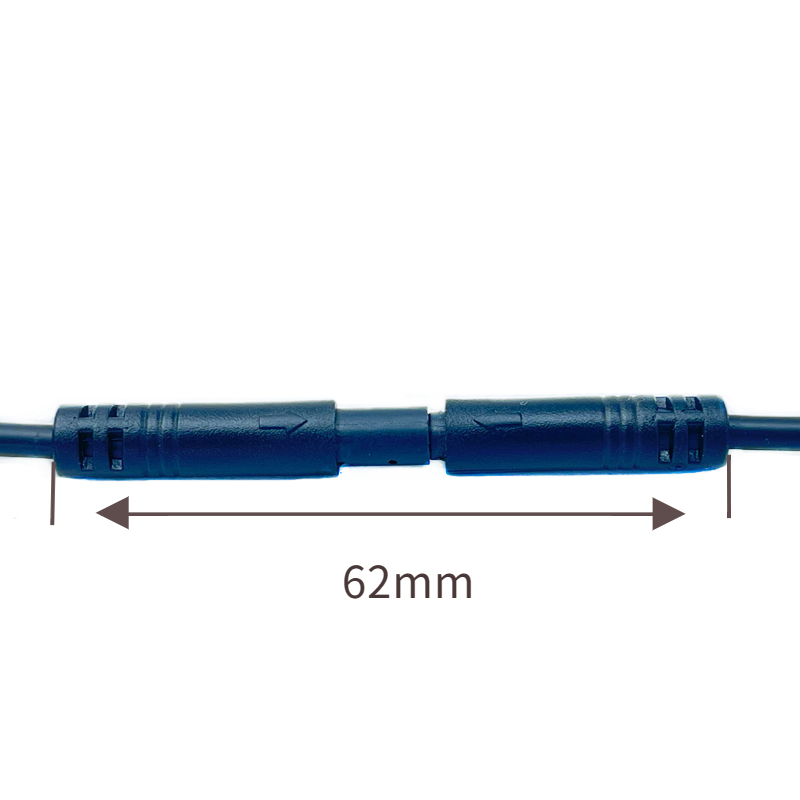News


News

The Critical Role of Waterproof Connectors in Automotive Lighting Systems
Release time:2025-04-23
viewed:228
Modern automotive lighting—from LED headlights to taillights and ambient lighting—demands not only cutting-edge design but also unwavering reliability under harsh conditions. Moisture, road debris, temperature swings, and vibration threaten to disrupt these systems, making waterproof connectors for automobiles indispensable. This article explores how these connectors safeguard against water-induced failures and outperform traditional soldered wiring in critical lighting applications.

Water infiltration in lighting systems can lead to catastrophic failures:
Corrosion: Moisture corrodes electrical contacts, degrading signal integrity and power delivery.
Short Circuits: Water creates conductive paths, disrupting LED drivers or control modules.
Lens Fogging: Condensation inside light assemblies scatters light, reducing visibility and aesthetics.
Premature Failure: Sensitive electronics, like adaptive headlight controllers, are vulnerable to humidity.
Traditional soldered wiring, while reliable in controlled environments, often falters in automotive settings. Let’s examine how waterproof connectors for automobiles address these challenges across key lighting components.
Modern LED headlights rely on complex electronics for adaptive beam patterns and dynamic control. waterproof connectors for automobiles ensure reliability by:
Blocking Water Ingress: IP67/IP68-rated seals withstand high-pressure car washes and road splash.
Dampening Vibration: Locking mechanisms (e.g., threaded couplings) prevent loosening in rough terrain.
Shielding EMI: Integrated metal shells or shielded cables protect low-voltage control signals from engine-generated electromagnetic interference.
Traditional Wiring Weakness: Soldered joints can crack due to thermal expansion or vibration, creating micro-gaps for moisture to seep in.
Taillights endure mud, salt spray, and repeated mechanical stress from trunk movements. Waterproof connectors excel here by:
Resisting Corrosion: Stainless steel contacts and silicone seals neutralize saltwater’s corrosive effects.
Providing Strain Relief: Reinforced cable glands prevent wires from fraying during tailgate operation.
Traditional Wiring Weakness: Hardwired connections lack flexibility, leading to wire fatigue and eventual failure at solder points.
Interior ambient lighting systems use delicate RGBW LEDs and CAN bus networks. Waterproof connectors enhance these systems by:
Preventing Condensation Damage: Sealed connectors protect PCB connections from cabin humidity swings.
Enabling Modularity: Plug-and-play designs simplify upgrades (e.g., adding new lighting zones) without rewiring.
Traditional Wiring Weakness: Soldered modules require full disassembly for repairs, increasing labor costs.
While soldered wiring has its place in static environments, waterproof connectors for automobiles dominate in demanding automotive applications. Here’s why:
Waterproof connectors use multi-layered sealing—silicone O-rings, potting compounds, and overmolded strain relief—to achieve IP67/IP68 ratings. Soldered joints, even with heat-shrink tubing, remain vulnerable to capillary action drawing moisture into gaps.
Automotive environments subject wiring to constant shaking and temperature swings (-40°C to +125°C). Waterproof connectors absorb stress through flexible materials and secure locking, whereas solder joints become brittle and crack under thermal cycling.
Replacing a failed LED module with waterproof connectors takes minutes: unplug the old unit and install the new one. With soldered wiring, technicians must desolder, strip wires, and rework connections—a time-consuming process prone to errors.
As vehicles add advanced features like matrix headlights or interactive ambient lighting, waterproof connectors allow engineers to expand systems without redesigning entire harnesses. Soldered systems lack this flexibility, often requiring costly retrofits.
To maximize performance in automotive lighting, prioritize these features:
IP Rating: IP67 for general use; IP68 for submersion-prone areas (e.g., wheel wells).
Material Durability:
High-temperature thermoplastics (e.g., PPS) for near-engine heat.
Nickel-plated contacts for corrosion resistance.
EMI Protection: Opt for connectors with metal shells or shielded variants for CAN/LIN bus systems.
Automotive Certifications: Ensure compliance with USCAR, ISO 16750, or OEM-specific standards.
In the evolution of automotive lighting—from basic illumination to adaptive, connected systems—waterproof connectors for automobiles have become a cornerstone of reliability. By defeating moisture, vibration, and corrosion, they enable innovations like laser headlights, interactive taillights, and personalized ambient lighting while reducing manufacturing and maintenance costs. As vehicles grow smarter and more electrified, the role of these connectors will only expand, ensuring that lighting systems shine bright, no matter the environment.